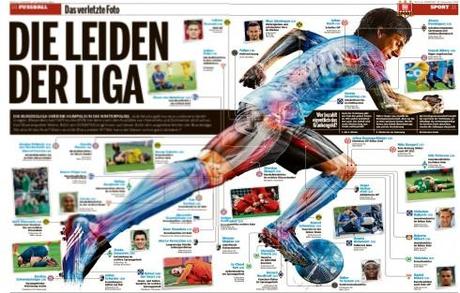TAKEAWAY: Two events in which I was involved this past week are a reminder of something I have suspected for a long time: there is no room for “solo numbers” when it comes to working through the challenges that face us in the media today, and for the next few years.
First, a planning session at Columbia University’s Graduate School of Journalism, where I am honored to be the Hearst Digital Media Professional in Residence. Part of my responsibilities include teaching a Spring semester course titled Multi Platform Design & Storytelling. Students in this class will pair up with those in a class Professor Michael Shapiro teaches about long narrative writing. We look forward to the possibilities. But, as I told the students who attended an information session about my class, an important part of this course is to engage in collaborative projects, because that is exactly the way it is in newsrooms worldwide.
The four centerpieces of any discussion involve storytelling, design, technology and the economics of publishing. No project should get off the ground without representatives from all four of these disciplines working things out together.
The second event, a workshop with the team of American City Business Journals, where we have worked closely with Emory Thomas, chief content officer, and Jon Wile, creative director, on the so called Project Pinstripe, which involves the conversion of 40 business weeklies across the United States, to give them a unified look, with a digital first approach to information.
Here, it is all about creating a culture of change so that these 40 titles approach information similarly and present it in a unified design (from storytelling to grids to color palettes). Now, however, the project moves towards the development of a digital philosophy, with product development teams and with a keen eye towards “mobile editioning”.
As we mapped out the strategy, one important point we made: make sure that the technical, the journalistic and the advertising folks get together from the first meeting on.
Appropriate to that, Reed Reibstein, our art director/project manager at Garcia Media, reinforced this point by referring to a piece titled Reorganization: Process is often shaped by how teams are organized.
Here is its first paragraph:
In the context of designing for the multi-device web, the high level of iteration and communication required to build a modern website is rendering the assembly line approach obsolete and reorganization necessary. However, if a process is changed without rethinking the network of talent, resources, and management that support it, friction and inefficiency can arise.
The author outlines the usual 3-step process when it comes to planning anything digital: plan, design, code. Then he reminds readers that, while these three steps should follow in this sequence, the meetings should not mirror that order. Instead, representatives of the three groups should meet together at every step of the process.
Indeed,that is my experience as well. One immediate benefit: no surprises from the technical team, who are likely to tell us not all that we as designers have dreamed up can actually be executed. Get those coders in the mix from the start, and you will be surprised how much more willing they are to say yes, when they are incorporated at an early stage.
The “media quartet” is, as the name implies, all about collaboration, each instrument playing in harmony with the other. It can be fun, too.
Pages we like


From Bild Am Sonntag, Nov. 24th edition
Here is a Sunday double page spread from Germany’s Bild about injuries commonly suffered by professional soccer players.
Our European correspondent, Frank Deville, tells us that the headline is The Pain of the League.
The graphic details the anatomy of injuries, including well known German players who have been injured.

